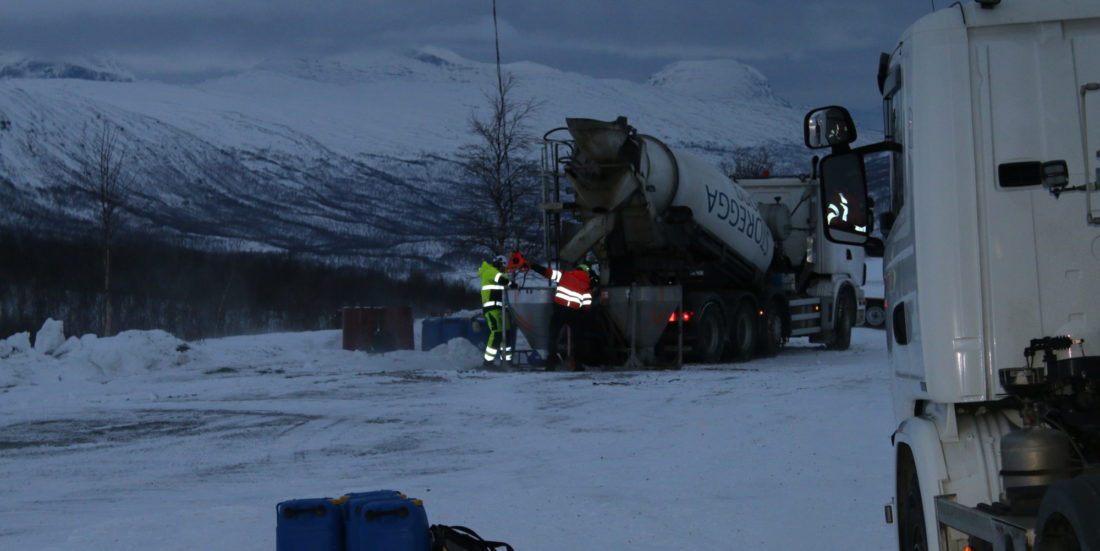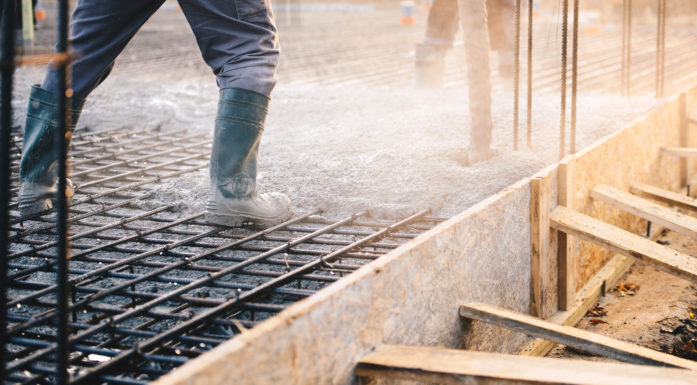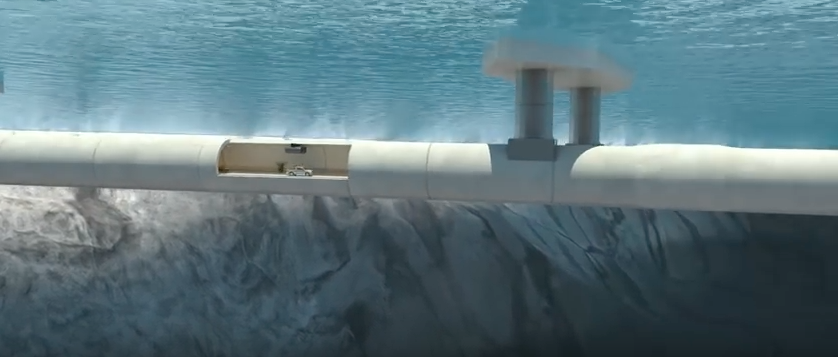The benefits of keeping concrete warm during transport in arctic conditions
Keeping concrete warm during transport between the mixing plant and construction site results in a better, cheaper and more eco-friendly product. A new type of concrete mixer truck can result in less wastage and better quality of this important building material.
Building in cold climate: One of the worst things that can happen to concrete is for it to undergo freezing while it is still fresh. To prevent this and ensure good curing conditions, large volumes of diesel are consumed to heat the concrete on construction sites. This wastes time and energy and leads to increased emissions.
Too much heat can also be detrimental to concrete during transport. This will accelerate the maturity and, in the worst case, cause the concrete to become unusable. For this reason, it is crucial to keep the temperature within the concrete as stable as possible once the concrete leaves the mixing plant.
Monitoring temperature at all transport stages
It is well known that concrete cools during transport in cold climate. However, until now little research had been carried out to investigate this process and to measure the levels and rates of temperature decrease. The aim of the project ‘Temperature in transport’ has been to track the temperature changes that occur during the various stages of concrete transport.
“Only when we know exactly where temperature loss occurs will we be able to identify effective solutions that can mitigate this effect”, says Project Manager Isak S. Langås at SINTEF.
In order to investigate the phenomenon, researchers at SINTEF developed their own temperature sensors which were placed in the concrete during transport. They also took infrared images on construction sites and measured the temperature once poured into the formwork. The results are presented in the report ‘Transport of concrete in cold climates’. The project is a collaboration between several players in the transport and construction sectors, all of whom have helped to ensure the best possible conditions for temperature monitoring under what at times have been very demanding.
One stop for a hot dog is all it takes
Construction sites in remote mountain locations require that concrete is transported by helicopter in so-called concrete tubs. The concrete can get very cold during these flights, even over short distances. To address this problem, the company Technomek has developed a prototype of an insulated winter tub fitted with a lid. As expected, an analysis of temperature changes showed that the concrete in the winter tub experienced less temperature loss than in a standard tub. The innovation has thus reduced the risk of the fresh concrete freezing, thus enabling the contractor to ensure a more safe and efficient construction process.

Sometimes the concrete has to be transported by helicopter, because the construction site has no road. A new solution on this will reduce heat loss during this type of transport. Photo: SINTEF
As part of the project, temperature was also measured in a concrete pump on a construction site. The results showed no cooling occurred while the pump was running regardless of the outside temperature. However, when the pump was stopped, the temperature in the pipeline dropped very rapidly.
The project also included an investigation involving logging the temperature of concrete during a three-hour journey in a mixer truck. The measurements revealed that the temperature increased by one degree while the truck was stationary as the driver took a short break for a hot dog at a gas station along the route.
“This is an amusing anecdote, but it was also crucial to our understanding of the sensitivity of concrete temperature to events that take place during transport, and the impact these have on product quality”, says Langås.
The results from the study are helping to make it possible to plan the transport of concrete so as to ensure optimal concrete quality.
Modern concrete is more vulnerable to frost
In the future the demand for low-carbon concrete will increase. Such concretes have a low cement content and, as a result, low heat development during hardening. This makes them more vulnerable to frost damage.
The traditional method of producing winter concretes are mixing in hot water. Less hot water is needed with lower amounts of cement, and this reduces the low-carbon concrete’s ability to withstand the cold in fresh state. An alternative is to preheat the aggregate, which is a very energy-intensive process.
“A much better solution would be to produce the concrete without using additional energy for heating”, says Langås. “The temperature could be maintained during transport by delivering the concrete in an insulated container and, if necessary, heating it on the construction site using efficient and environmentally friendly solutions, such as a waterborne heat system”, he says.
Langås is hopeful that the project may help to highlight the benefits of good planning. The supply of high-quality, environmentally friendly, cast-in-place concrete requires knowledge of the entire process of concrete manufacture and use, from mixing the plant to the finished, hardened structure.
A new concrete mixer truck
“The knowledge gained during this study also provides us with a good platform for the development of new concrete transport solutions”, says Langås.
He is currently looking for partners to finance the development of a new concrete mixer truck that can regulate and monitor the temperature in the concrete on both hot and cold days. He envisages using the heat from the truck’s engine to maintain or increase the concrete temperature, as required.
This will be achieved by building a weather-proof shell around the mixer drum that can protect from the windchill and channel heat generated by the engine around the drum. In order to protect the concrete from heat on hot days, the closed truck cabinet/shell should be designed with the possibility to channel the air moving around the drum while the truck is in motion as a coolant. This option must also shield the drum from engine heat when the vehicle is stationary.
A mixer truck of this type will help to ensure better quality concrete in all climates and will thus appeal to a global market. The researchers also see significant market potential in the winter tub for concrete transport by helicopter.





